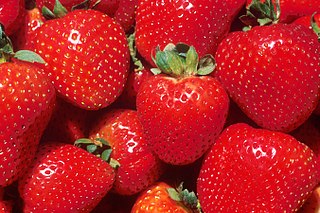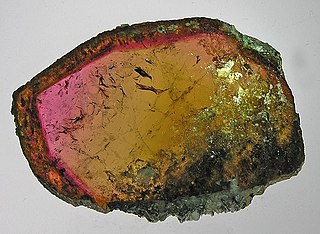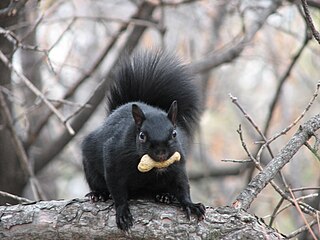
Color or colour is the visual perceptual property corresponding in humans to the categories called blue, green, red, etc. Color derives from the spectrum of light interacting in the eye with the spectral sensitivities of the light receptors. Color categories and physical specifications of color are also associated with objects or materials based on their physical properties such as light absorption, reflection, or emission spectra. By defining a color space colors can be identified numerically by their coordinates.

A gemstone is a piece of mineral crystal which, in cut and polished form, is used to make jewelry or other adornments. However, certain rocks and occasionally organic materials that are not minerals are also used for jewelry and are therefore often considered to be gemstones as well. Most gemstones are hard, but some soft minerals are used in jewelry because of their luster or other physical properties that have aesthetic value. Rarity and notoriety are other characteristics that lend value to gemstones.

Indigo is a deep color close to the color wheel blue, as well as to some variants of ultramarine, based on the ancient dye of the same name. The word "indigo" comes from the Latin for Indian as the dye was originally exported to Europe from India.

Koi or more specifically nishikigoi, are colored varieties of the Amur carp that are kept for decorative purposes in outdoor koi ponds or water gardens.

Red is the color at the long wavelength end of the visible spectrum of light, next to orange and opposite violet. It has a dominant wavelength of approximately 625–740 nanometres. It is a primary color in the RGB color model and a secondary color in the CMYK color model, and is the complementary color of cyan. Reds range from the brilliant yellow-tinged scarlet and vermillion to bluish-red crimson, and vary in shade from the pale red pink to the dark red burgundy.

Turmeric is a flowering plant, Curcuma longa of the ginger family, Zingiberaceae, the rhizomes of which are used in cooking. The plant is a perennial, rhizomatous, herbaceous plant native to the Indian subcontinent and Southeast Asia that requires temperatures between 20 and 30 °C and a considerable amount of annual rainfall to thrive. Plants are gathered each year for their rhizomes, some for propagation in the following season and some for consumption.

Tourmaline is a crystalline boron silicate mineral compounded with elements such as aluminium, iron, magnesium, sodium, lithium, or potassium. This gemstone can be found in a wide variety of colors.
A pH indicator is a halochromic chemical compound added in small amounts to a solution so the pH (acidity or basicity) of the solution can be determined visually. Hence, a pH indicator is a chemical detector for hydronium ions (H3O+) or hydrogen ions (H+) in the Arrhenius model. Normally, the indicator causes the color of the solution to change depending on the pH. Indicators can also show change in other physical properties; for example, olfactory indicators show change in their odor. The pH value of a neutral solution is 7.0 at 25°C (standard laboratory conditions). Solutions with a pH value below 7.0 are considered acidic and solutions with pH value above 7.0 are basic (alkaline).As most naturally occurring organic compounds are weak protolytes, carboxylic acids and amines, pH indicators find many applications in biology and analytical chemistry. Moreover, pH indicators form one of the three main types of indicator compounds used in chemical analysis. For the quantitative analysis of metal cations, the use of complexometric indicators is preferred, whereas the third compound class, the redox indicators, are used in titrations involving a redox reaction as the basis of the analysis.

In humans and most mammals and birds, the iris is a thin, annular structure in the eye, responsible for controlling the diameter and size of the pupil, thus the amount of light reaching the retina. Eye color is defined by that of the iris. In optical terms, the pupil is the eye's aperture, while the iris is the diaphragm.

A flame is the visible, gaseous part of a fire. It is caused by a highly exothermic chemical reaction taking place in a thin zone. Very hot flames are hot enough to have ionized gaseous components of sufficient density to be considered plasma.

Color vision, a feature of visual perception, is an ability to perceive differences between light composed of different wavelengths independently of light intensity. Color perception is a part of the larger visual system and is mediated by a complex process between neurons that begins with differential stimulation of different types of photoreceptors by light entering the eye. Those photoreceptors then emit outputs that are propagated through many layers of neurons and then ultimately to the brain. Color vision is found in many animals and is mediated by similar underlying mechanisms with common types of biological molecules and a complex history of evolution in different animal taxa. In primates, color vision may have evolved under selective pressure for a variety of visual tasks including the foraging for nutritious young leaves, ripe fruit, and flowers, as well as detecting predator camouflage and emotional states in other primates.

The mourning dove is a member of the dove family, Columbidae. The bird is also known as the American mourning dove, the rain dove, and colloquially as the turtle dove, and was once known as the Carolina pigeon and Carolina turtledove. It is one of the most abundant and widespread of all North American birds. It is also a leading gamebird, with more than 20 million birds shot annually in the U.S., both for sport and meat. Its ability to sustain its population under such pressure is due to its prolific breeding; in warm areas, one pair may raise up to six broods of two young each in a single year. The wings make an unusual whistling sound upon take-off and landing, a form of sonation. The bird is a strong flier, capable of speeds up to 88 km/h (55 mph). It is the national bird of the British Virgin Islands.

Tetrachromacy is the condition of possessing four independent channels for conveying color information, or possessing four types of cone cell in the eye. Organisms with tetrachromacy are called tetrachromats.

Pokémon Gold Version and Pokémon Silver Version are 1999 role-playing video games developed by Game Freak and published by Nintendo for the Game Boy Color. They are the first installments in the second generation of the Pokémon video game series. They were released in Japan in 1999, Australia and North America in 2000, and Europe in 2001. Pokémon Crystal, an enhanced version, was released a year later in each region. In 2009, on the 10th anniversary of Gold and Silver, remakes titled Pokémon HeartGold and SoulSilver were released for the Nintendo DS.

The Chausie is a domestic breed of cat that was developed by breeding a few individuals from the non-domestic species jungle cat to a far greater number of domestic cats. The Chausie was first recognized as a domestic breed by The International Cat Association (TICA) in 1995. Within the domestic breeds, the Chausie is categorized as a non-domestic hybrid source breed. Because Chausies are mostly descended from domestic cats, by about the fourth generation they are fully fertile and completely domestic in temperament.

Black squirrels are a melanistic subgroup of squirrels with black coloration on their fur. The phenomenon occurs with several species of squirrels, although it is most frequent with the eastern gray squirrel and the fox squirrel. Black morphs of the eastern gray and fox squirrels are the result of an abnormal pigment gene. Several theories have surfaced as to why the black morph occurs, with some suggesting that the black morph is a selective advantage for squirrels inhabiting the northern ranges of the species, with the black-fur providing a thermal advantage over its non-melanistic counterpart.

A flower, sometimes known as a bloom or blossom, is the reproductive structure found in flowering plants. The biological function of a flower is to facilitate reproduction, usually by providing a mechanism for the union of sperm with eggs. Flowers may facilitate outcrossing resulting from cross-pollination or allow selfing when self-pollination occurs.
Color vision, a proximate adaptation of the vision sensory modality, allows for the discrimination of light based on its wavelength components.

Cuttlefish or cuttles are marine molluscs of the order Sepiida. They belong to the class Cephalopoda, which also includes squid, octopuses, and nautiluses. Cuttlefish have a unique internal shell, the cuttlebone, which is used for control of buoyancy.

Andrew Rebori's house bat is a species of bat found in Africa.

















